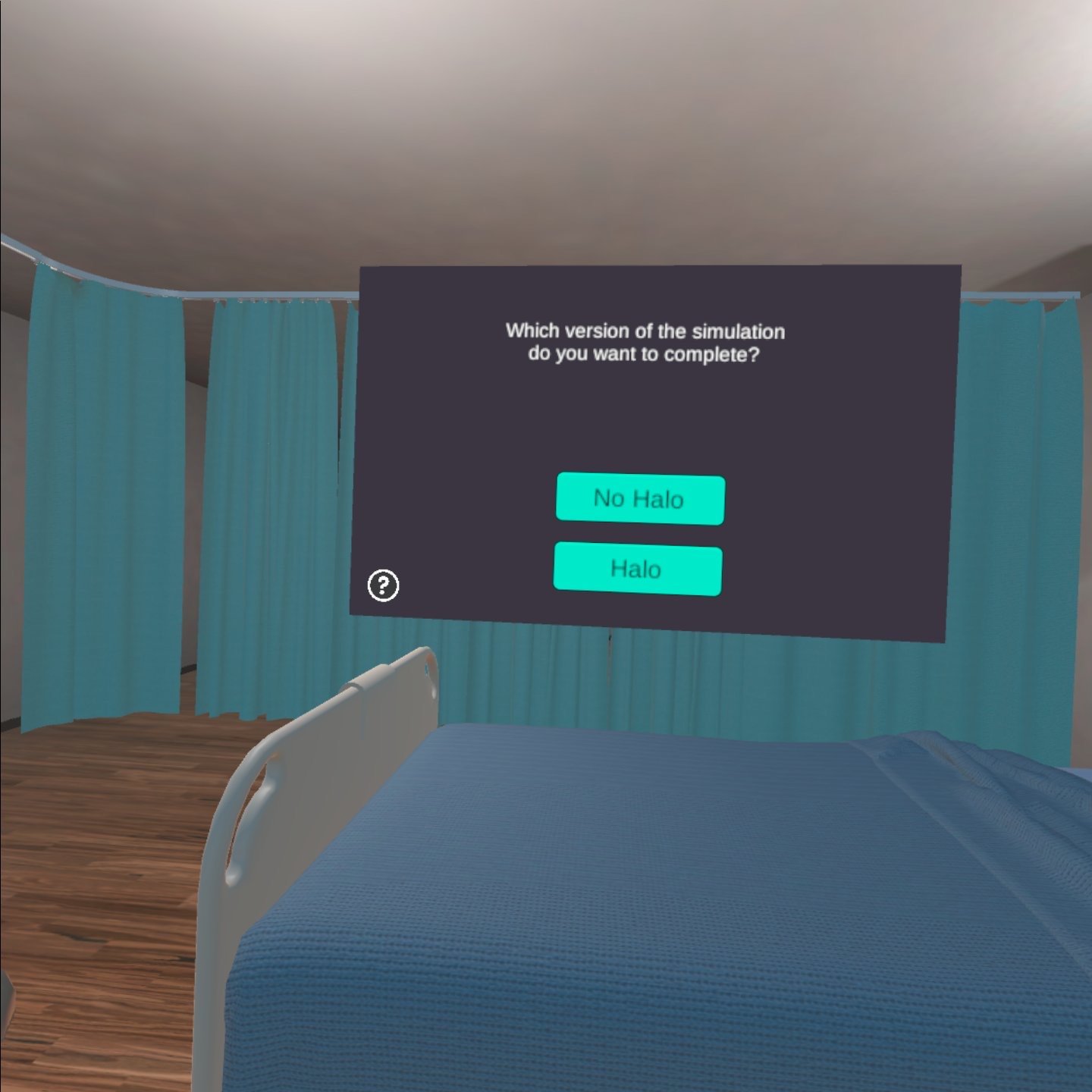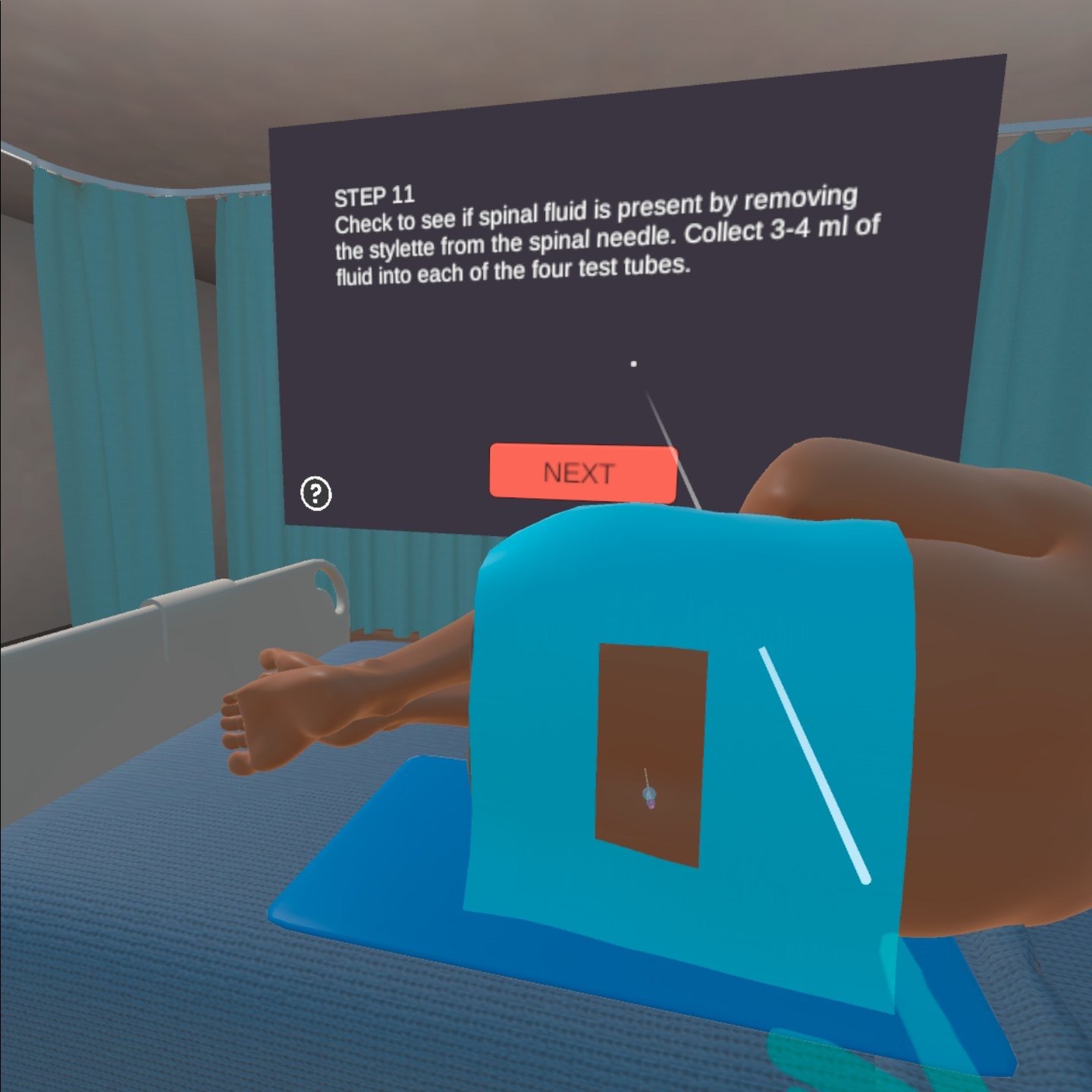The Impact of Visual Cues on Knowledge Gain in an Educational Virtual Reality Simulation
Principal Investigator & Game Designer: Sara Rutkowski
Assets: Sara Rutkowski & Natalie Krug
I created a simulation of a lumbar puncture in virtual reality (VR) for the Oculus Quest 2 series of headsets. The objective was to study how a VR application can be designed to enhance educational outcome and learning performance. VR has the potential to provide as an additional learning platform, but there is a lack of knowledge on how to design VR in regards to supporting education. The audience for this project was medical students who had previous lumbar puncture experience, no matter what their level of expertise was. I aimed to answer the question:
Does the incorporation of visual design components, in the form of halos, affect knowledge gain in medical students with prior lumbar puncture experience during an educational virtual reality simulation?
The simulation was created in two versions: a control and an experimental. The control group had no halos displayed. The experimental group did. In this group, halos (or a glowing outline) were displayed around certain 3D models with the hopes of acting as efficient guides compared to the control group. These halos notified the user that they had to interact with these 3D models in order to complete a step of the lumbar puncture.
In order to complete the simulation, the users had to progress through each step. A “next” button was displayed as red and would turn blue when the user finished their step. Then, they could press the button to move forward to the next step.
Conclusions
Upon completion of testing each VR version, it was concluded that the experimental version with the glowing halo effects was the most successful design. Based on the results of the post-examinations of volunteers, the individuals in this group performed better than those in the control group.
The purpose of this research project was to determine if VR design can be enhanced to increase knowledge retention and if there is a potential relationship between specific design choices and learning. Although this study had a small number of volunteers, the survey feedback and examination results proved to be significant. However, each individual learns in a unique way, and there are plenty of opportunities for the future strengthening of design in VR.















